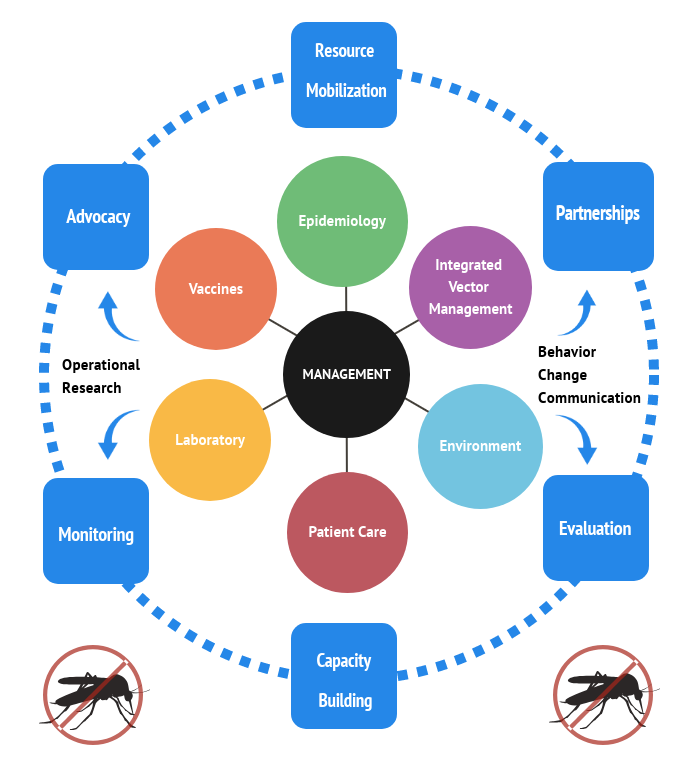Understanding Dengue Fever

Dengue fever is a viral disease caused by the dengue virus, which is transmitted by the Aedes aegypti mosquito. The disease is characterized by symptoms such as high fever, severe headache, joint and muscle pain, rash, and bleeding. There are four serotypes of the dengue virus, and infection with one serotype does not provide long-term immunity against the other serotypes. This means that individuals can be infected with dengue fever multiple times, increasing the risk of severe disease and complications.
Outbreak Control Measures
Outbreak control measures for dengue fever involve a multi-faceted approach that includes:
- Surveillance and Monitoring: Effective surveillance and monitoring are critical to detect dengue fever outbreaks early. This involves reporting cases, conducting epidemiological investigations, and monitoring mosquito populations.
- Vector Control: Controlling the Aedes aegypti mosquito population is essential to prevent the spread of dengue fever. This can be achieved through measures such as:
- Eliminating breeding sites: Removing standing water and other potential breeding sites for mosquitoes.
- Using insecticides: Applying insecticides to kill mosquito larvae and adults.
- Biological control: Introducing natural predators or competitors of the Aedes aegypti mosquito.
- Public Awareness and Education: Raising public awareness and education on dengue fever prevention and control is crucial. This can be achieved through:
- Public campaigns: Organizing public campaigns to educate people on dengue fever symptoms, transmission, and prevention.
- Community engagement: Engaging with local communities to promote dengue fever prevention and control measures.
- Clinical Management: Effective clinical management of dengue fever cases is essential to reduce morbidity and mortality. This involves:
- Early diagnosis: Diagnosing dengue fever cases early and accurately.
- Appropriate treatment: Providing appropriate treatment, including fluid replacement and supportive care.
- Vaccination: Vaccination is a critical component of dengue fever outbreak control. Several dengue vaccines are available, and their use can help reduce the burden of disease.
Interventions
Several interventions can be implemented to control dengue fever outbreaks, including:
- Fogging: Fogging involves applying insecticides to kill mosquito adults and larvae. This can be done using thermal foggers or ultra-low volume (ULV) sprayers.
- Larval Control: Larval control involves killing mosquito larvae before they emerge as adults. This can be done using larvicides, such as temephos or pyriproxyfen.
- Mosquito Traps: Mosquito traps can be used to capture and kill adult mosquitoes. These traps can be baited with attractants, such as carbon dioxide or lactic acid.
- Biological Control: Biological control involves introducing natural predators or competitors of the Aedes aegypti mosquito. This can include the use of fish, such as guppies or goldfish, which feed on mosquito larvae.
- Genetic Modification: Genetic modification involves modifying the Aedes aegypti mosquito to prevent it from transmitting dengue fever. This can be done using techniques such as genetic engineering or gene editing.
Challenges and Limitations
Despite the availability of various outbreak control measures and interventions, there are several challenges and limitations to controlling dengue fever outbreaks. These include:
- Limited Resources: Controlling dengue fever outbreaks requires significant resources, including funding, personnel, and infrastructure.
- Urbanization and Climate Change: Urbanization and climate change can contribute to the spread of dengue fever by increasing the population of Aedes aegypti mosquitoes.
- Lack of Public Awareness: Limited public awareness and education on dengue fever prevention and control can hinder outbreak control efforts.
- Inadequate Healthcare Infrastructure: Inadequate healthcare infrastructure can limit the ability to diagnose and treat dengue fever cases effectively.
FAQs
- What are the symptoms of dengue fever?
- Dengue fever symptoms include high fever, severe headache, joint and muscle pain, rash, and bleeding.
- How is dengue fever transmitted?
- Dengue fever is transmitted by the Aedes aegypti mosquito.
- What is the best way to prevent dengue fever?
- The best way to prevent dengue fever is to eliminate breeding sites, use insecticides, and practice personal protection measures, such as wearing insect repellent and clothing that covers the skin.
- Is there a vaccine available for dengue fever?
- Yes, several dengue vaccines are available, and their use can help reduce the burden of disease.
- What is the treatment for dengue fever?
- Treatment for dengue fever includes fluid replacement, supportive care, and monitoring for complications.
Conclusion
Dengue fever outbreak control requires a multi-faceted approach that includes surveillance and monitoring, vector control, public awareness and education, clinical management, and vaccination. Several interventions, such as fogging, larval control, mosquito traps, biological control, and genetic modification, can be implemented to control dengue fever outbreaks. However, there are challenges and limitations to controlling dengue fever outbreaks, including limited resources, urbanization and climate change, lack of public awareness, and inadequate healthcare infrastructure. By understanding the strategies and interventions used to control dengue fever outbreaks, individuals and communities can take steps to prevent and control the spread of this disease. It is essential to continue researching and developing new technologies and strategies to improve dengue fever outbreak control and reduce the burden of this disease.
Closure
Thus, we hope this article has provided valuable insights into Dengue fever outbreak control. We appreciate your attention to our article. See you in our next article!